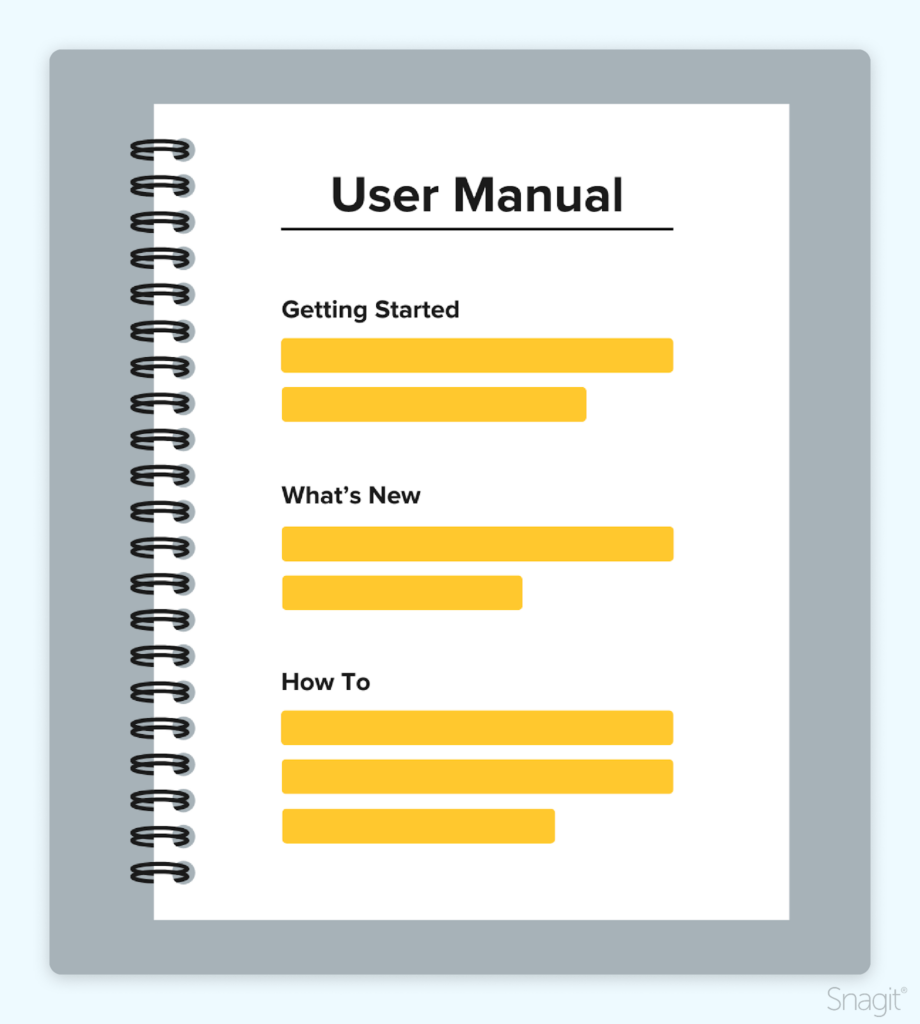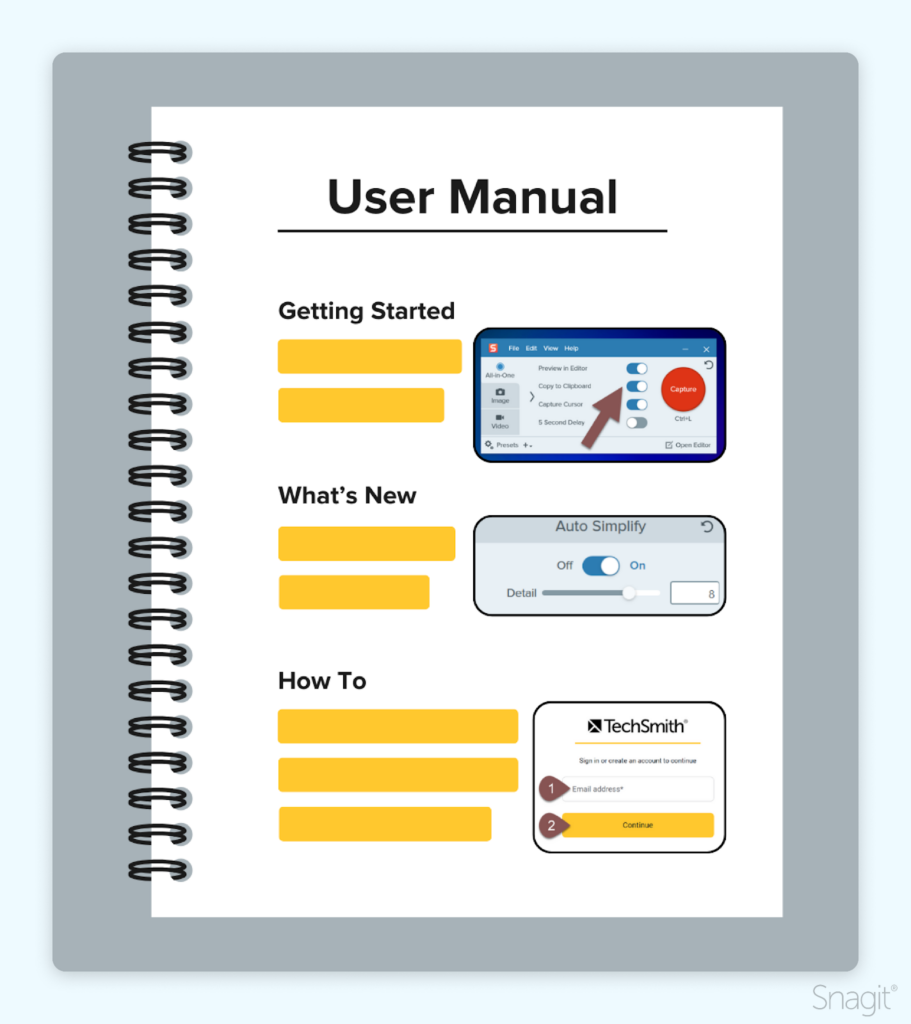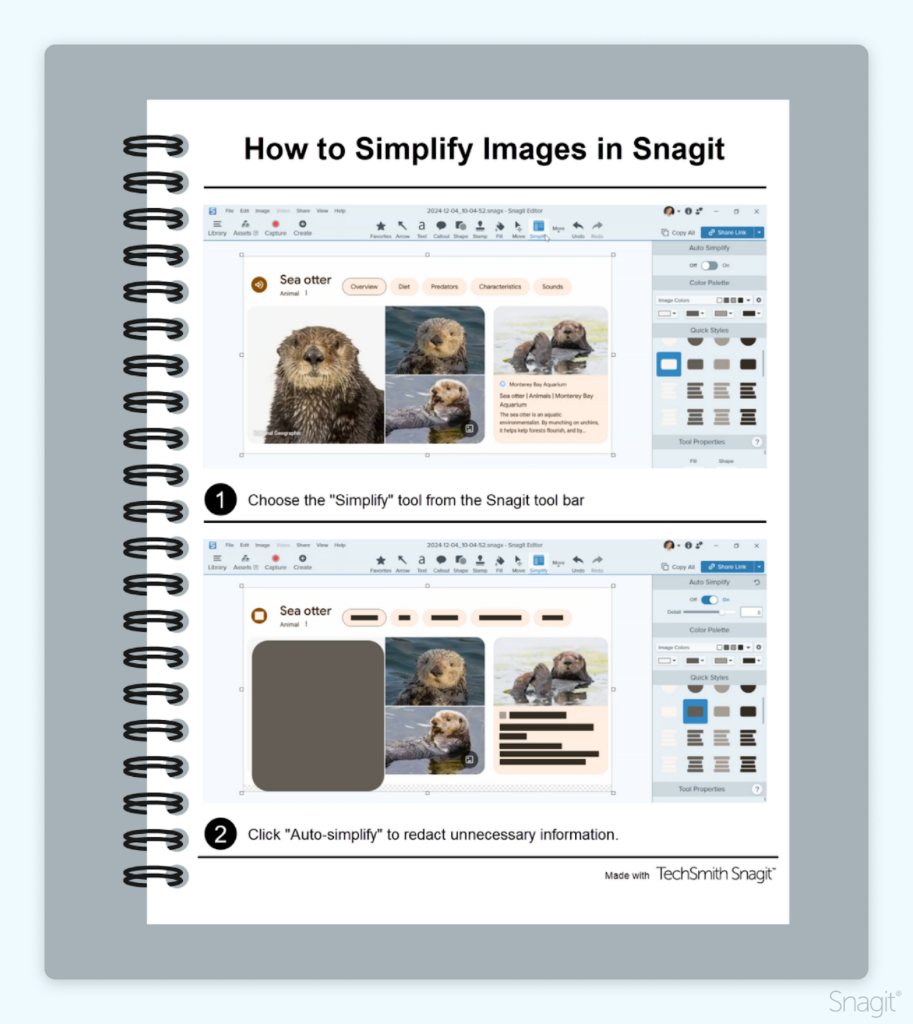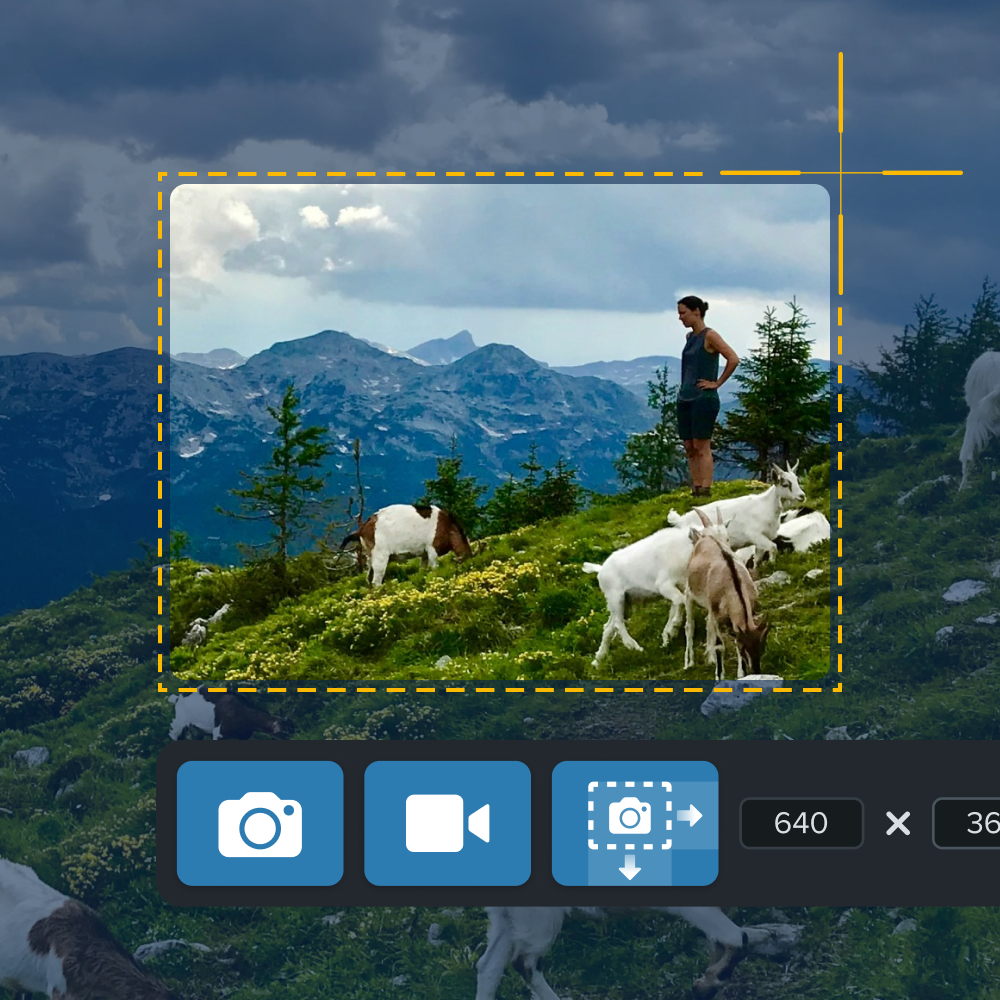When written and created with intention, a user manual can act as an extension of the customer service experience and save your company time and money by reducing the number of support inquiries that users have to make.
In this article, we’ll examine what a user manual is, explore the various types you can create, and outline exactly how to write user guides that your team members and customers will be eager to use.
What is a user manual?
A user manual goes by many names. You may hear terms like instruction manual, user guide, maintenance manual, or technical documentation, but they all mean the same thing. A manual is designed to help an end user properly utilize your product or service and to find solutions to any problems that may arise during use. It can be provided in print, digital format, or both.
User manuals contain detailed, step-by-step instructions for the end user and also provide support for troubleshooting. They are not meant to be read from cover to cover but used as reference guides. Therefore, a table of contents should always be included in a user manual.
A quick start or startup guide should be included in your manual to help users feel comfortable and confident when they begin using the product.

What are the different types of user manuals?
User manuals can be created for many topics and purposes. Let’s look at some of the options you have to choose from.
1. Instruction manual
An instruction manual is a type of user guide that provides basic instructions for how to use a product in its intended way.
2. Training manual
This type of user manual provides a set of instructions related to the completion of a specific task, project, or job.
3. Service manual
User manuals that outline how to care for and maintain a piece of equipment or machinery at various points in its life are referred to as service manuals.
5. Operation manual
Operation manuals outline the roles, responsibilities, and processes pertaining to a company or organization.
6. Organizational policy manual
The documentation outlining a company’s policies, procedures, and best practices is called an organizational policy manual.
7. Standard Operating Procedures (SOPs) manual
A standard operating procedures manual helps users by outlining specific instructions for completing established procedures.
Stop repeat questions
Create clear videos and guides with Snagit so you only have to explain tasks once.
Try it Free
Why does your business need user manuals?
A user manual equips people to solve problems without needing to seek outside help. In our instant-gratification-driven society, it is important to provide your users with the tools to quickly and efficiently achieve the benefits they want from your product or service. A well-crafted user manual can accomplish just that!
User guides are a much-needed supplement to excellent customer service. Some of the benefits your business will see from writing great user manuals include simplifying training, saving time, and creating a knowledge base for your team.
What are the essential elements of a great user manual?
What are the essential elements of a great user manual?
Even though each product is unique and will require different elements to create truly great user documents, there are some end-user documentation best practices to follow no matter what.
1. Plain language
An important part of writing effective user manuals is making sure you are writing for the user, not the developer. Don’t make assumptions about what your end user might know or be familiar with. Using acronyms, buzzwords, or slang used around the office will leave your customers feeling confused, frustrated, and ill-equipped.
Striking a balance between writing in a way that is not overly simplistic yet provides the necessary support for users to fully understand how to use the product is key to creating an effective user manual. Use simple language, but avoid writing as if your users are children—unless, of course, they are! This approach ensures clarity and comprehension for all users.
2. Simplicity
Simplicity is the name of the game when writing a user manual. Both the content and the design should adhere to this idea. Crowding your documentation with complicated illustrations and dense blocks of text will give the sense that the user guide is too complex and inaccessible.
3. Visuals
“Show, don’t tell” is a key philosophy in writing user manuals. Content like images, videos, and annotated screenshots go a long way in helping to understand a concept. Seeing how something works is often much more effective than just reading about it.
Not only do visual aids break up long blocks of text, but they also eliminate some of the bulk of text that can make user manuals intimidating.
In a study completed by Techsmith, it was discovered that 67% of individuals were able to complete tasks better when provided instructions that used annotated screenshots to convey information rather than text alone.

4. Focus on the problem to be solved
Instead of simply listing and describing each feature or design detail of your product, present them in a way that supports the user’s experience. Explain features and benefits in the context of the problems they solve.
5. Logical hierarchy and flow
Use a clear hierarchical structure of headings and subheadings to help users understand what they will learn in each section of your user manual. The hierarchy should follow a logical flow, guiding customers smoothly through the information they need from beginning to end.
Make sure to begin with the basics and build in a logical progression toward the more advanced features of your product.
6. Accessibility
It’s not uncommon for some individuals who need your user manual to require additional support to use it effectively. Accessibility requirements are law in many places and good practice regardless of the legal obligation behind them.
Ensuring that your user manuals adhere to accessibility standards is simply good customer support. Creating accessible content for users who may have visual or hearing impairments or cognitive disabilities is an important factor in designing user manuals.
7. Good design
Design your user manuals with your customer’s satisfaction in mind. If you create something visually appealing, they will be much more likely to use it effectively!
Adhering to the “show don’t tell” philosophy we discussed earlier works well here too! Using graphics and images to supplement text is a great option for either print or digital user manuals, with videos and GIFs adding interest and a supportive element to digital user guides.
If your organization has a style guide, your design should adhere to it, but if you are working without one, it is important to maintain consistency throughout your user guide. Font and color choices should remain consistent throughout the document and ideally between all of your user manuals.
You can use Snagit to help maintain consistency in your user guides by accessing the free templates it offers!
Stop repeat questions
Create clear videos and guides with Snagit so you only have to explain tasks once.
Try it Free
8. Feedback from real users and/or beta testers
Unless you have asked for and listened to feedback from the individuals who will actually be using your product about the user manuals you have written, you won’t have an accurate sense of whether or not they are as effective as possible.
You need to understand the pain points of your product’s users and ensure they are addressed in the user manuals you write. While some feedback may seem obvious, there is a significant opportunity to gain valuable insights into the needs of the consumers you aim to serve.
How to create a user manual?
Creating a user manual is an important undertaking that can significantly impact your business and benefit the users you aim to serve. While it can be overwhelming, we’ve broken down the process of writing a user manual so you can easily follow along!
1. Identify the users
Like any piece of communication you create, a crucial first step is identifying the person who will be on the receiving end.
Identifying the user for your user manual will help you make good decisions about things like the tone, the amount of detail to include, and how to present the content.
Writing a user guide for a tech developer is done differently than writing one for your product’s end user. Identifying your audience is a make-it-or-break-it step.
2. Focus on the problem
User documentation is created to assist in solving a problem or teaching someone to do something new. It is necessary to identify exactly what your user manual is meant to accomplish and ensure that you keep your focus there.
It can become tempting to expand the subject matter and cover many aspects of or potential uses for your product. This can cloud the actual solution that the user needs and cause frustration or calls to your customer service line.
Focus on the specific solution your customer will need to have, whether they are an individual learning to use the product or a technician needing to repair it.
3. Use sequential steps in order
Sequential steps or numbered lists are essential to creating an instruction manual. The instructions should be presented in the order required to complete the task at hand. Attempt to complete the task while following the specific steps you have laid out in the order presented.
It is possible, likely even, that you will identify missing steps as you work through your initial list. You may also discover that something you thought was one task actually needs to be broken down into a few tasks for the sake of clarity.
To make this process easier, Snagit’s Step Capture comes in to save the day. With this feature, you can simply walk through the process you want to demonstrate one time while Snagit records every time you click. Once you’re done, Snagit will compile each of your clips into a sequential step-by-step guide. 4. Map the user journey
The goal in writing a user guide is to understand how your customers intend to use your product and create a way for them to easily do just that.
You need to put in the work to understand the problem the user has or the goal they hope to reach in using your product, as well as how they interact with your brand. These details will help you imagine the customer’s journey from problem to solution and map out the steps needed to get them through the process.

Orderly, sequential lists are incredibly important when creating user manuals.
4. Map the user journey
The goal in writing a user guide is to understand how your customers intend to use your product and create a way for them to easily do just that.
You need to put in the work to understand the problem the user has or the goal they hope to reach in using your product, as well as how they interact with your brand. These details will help you imagine the customer’s journey from problem to solution and map out the steps needed to get them through the process.
5. Choose a template
Developing a set of templates can make the job of writing and designing user documentations significantly easier than you might think! It can streamline your process and make consistency a much more achievable goal.
In addition to setting specifics like fonts (type and size), contrast requirements, and colorways, you’ll want to include the following in your user manual template:
- Assigned space for an introduction
- Clear sections and subsections
- Your selected format for sharing sequential steps
- Warnings and highlighted cautions
- Assigned space for a conclusion
6. Write simple and easy-to-follow content
The content of your user manual should be as simple and easy to follow as possible. Both the content and the format need to be considered and reviewed for clarity and simplicity.
Make sure that each step of the process explains only one task and uses language that is as concise and clear as possible. Be sure to edit down your content as thoroughly as possible until you have arrived at a user manual with only the most essential information included.
Again, Snagit’s Step Capture is the perfect help for this. With this feature, you’ll know exactly what to include and each step necessary to complete a process.
7. Treat all users as laymen
When writing a user manual, assume that the reader knows nothing about your product. Write as if you are communicating with a layman.
Avoid technical language and jargon wherever possible. While there may be instances where it is unavoidable, these should be rare exceptions.
8. Test instructions alongside the product using naive users
An important step in the process of writing a user manual is the testing. The choice of who to test on can change the results dramatically.
Ideally, testing should be performed on individuals who have never used your product or viewed the manual before. Observe them working through the process and make a note of where they get stuck as they progress through the user manual. The material should then be revised accordingly.
Your testers should be able to navigate and use the product, relying solely on the user manual for support. They should not need to reach out for additional support. Everything they need should be in the user guide itself.
9. Build content using a practical approach
Practical examples and specific explanations of results that users might have after completing each step in the user manual should be included wherever possible. The user should know what feedback they may receive from the product; what they might see or hear at any step of the process.
10. Explain symbols, icons, and codes early
As you write a user manual, you may need to use icons, symbols, or codes to help give the instructions needed. It is important to define these as early as possible in your user manual to avoid any confusion or frustration on behalf of the reader. n your user manual to avoid any confusion or frustration on behalf of the reader.
User manual FAQs
User documentation is content in the form of user manuals or user guides that serve to help end users successfully interact with a product.
User documentation has historically been provided as physical documentation, like booklets or manuals. Nowadays, user manuals are more frequently created and distributed digitally.
A user manual or user guide is written in plain language with a focus on problem-solving and utilizes good design. It should contain a table of contents, follow a logical hierarchy and flow, and provide accessible content. A good user manual will also be searchable and be influenced by feedback collected from real users.
User manuals can be created in a few simple steps. First, the goals of the user guide need to be established and a plan created that will allow those goals to be reached. Before being released, the user manual needs to be tested, and revisions must be made accordingly. Finally, the user guide should be kept up to date, with revisions being made as updates or new editions are incorporated.
The best snipping tool for Windows and Mac
Don’t let clumsy built-in tools hold you back. Take and edit screenshots with Snagit!
Get Snagit



Share